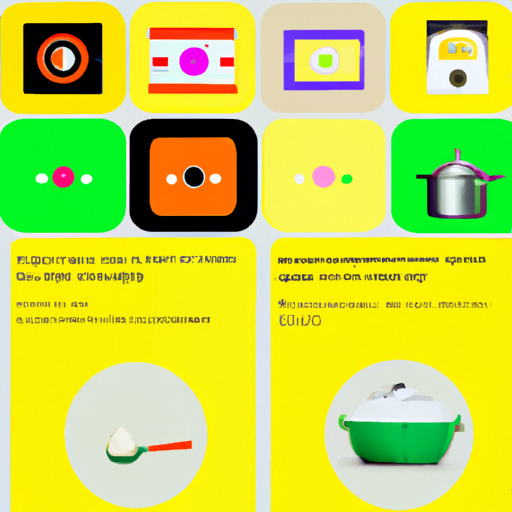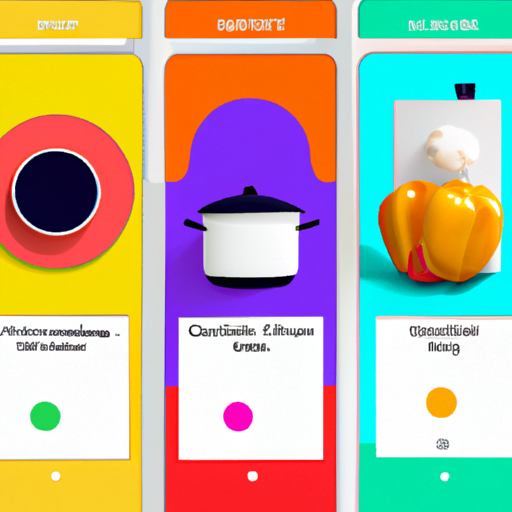
-
Table of Contents
Interface Design for Recipe and Cooking Apps

With the rise of smartphones and the increasing popularity of cooking at home, recipe and cooking apps have become essential tools for many home cooks. These apps provide a wealth of recipes, cooking tips, and interactive features to enhance the cooking experience. However, the success of these apps heavily relies on their interface design. A well-designed interface can make the app intuitive, engaging, and easy to use, while a poorly designed interface can frustrate users and hinder their cooking experience. In this article, we will explore the key principles and best practices for interface design in recipe and cooking apps.
The Importance of User-Centered Design
When designing a recipe and cooking app, it is crucial to adopt a user-centered design approach. This means putting the needs and preferences of the users at the forefront of the design process. By understanding the target audience and their goals, designers can create interfaces that are tailored to their specific needs. User research, such as surveys and interviews, can provide valuable insights into the preferences and behaviors of home cooks, helping designers make informed decisions.
One important aspect of user-centered design is creating a clear and intuitive navigation system. Users should be able to easily find recipes, browse different categories, and access additional features without feeling overwhelmed or confused. A well-organized navigation menu, with clear labels and logical groupings, can greatly enhance the user experience. Additionally, incorporating search functionality with filters and sorting options can help users quickly find the recipes they are looking for.
Visual Hierarchy and Typography
Visual hierarchy plays a crucial role in guiding users’ attention and helping them navigate through the app. By using appropriate visual cues, designers can highlight important elements and create a sense of order and structure. For recipe and cooking apps, it is important to prioritize the recipe itself, as well as key information such as ingredients and cooking instructions.
Typography also plays a significant role in interface design. Choosing the right fonts and font sizes can greatly impact the readability and overall aesthetic of the app. For recipe apps, it is important to use legible fonts that are easy to read, even in small sizes. Additionally, designers should consider the use of bold and italic styles to emphasize important information, such as ingredient quantities or cooking tips.
Visuals and Imagery
High-quality visuals and imagery are essential for recipe and cooking apps. Users are often drawn to visually appealing images of dishes, as they can help them decide which recipes to try. Incorporating mouth-watering food photography can greatly enhance the overall user experience and increase engagement with the app.
However, it is important to strike a balance between aesthetics and functionality. Images should not overpower the recipe itself or slow down the app’s performance. Optimizing images for different screen sizes and resolutions is crucial to ensure a smooth and enjoyable user experience.
Interactive Features and Personalization
Recipe and cooking apps can greatly benefit from interactive features that enhance the user experience. For example, incorporating step-by-step cooking instructions with timers and reminders can help users stay organized and on track. Interactive shopping lists that allow users to add ingredients directly from the recipe can also be a valuable feature.
Personalization is another important aspect of interface design for recipe and cooking apps. By allowing users to save their favorite recipes, create meal plans, and customize their preferences, apps can create a more personalized and engaging experience. Personalization can also help apps provide tailored recommendations and suggestions based on the user’s dietary restrictions, cooking skills, and past interactions with the app.
Case Study: Yummly
One example of a recipe and cooking app that excels in interface design is Yummly. Yummly offers a user-friendly interface with a clean and intuitive design. The app’s home screen features a search bar, allowing users to quickly find recipes based on keywords or ingredients. The navigation menu is well-organized, with clear categories such as “Dinner,” “Desserts,” and “Healthy.” Users can also filter recipes based on dietary restrictions, cooking time, and difficulty level.
Yummly’s recipe pages are visually appealing, with high-quality images and a clear visual hierarchy. The ingredients and cooking instructions are presented in a structured and easy-to-follow format. Users can easily add ingredients to their shopping list or save recipes for later. Yummly also offers personalized recommendations based on the user’s preferences and browsing history, creating a tailored experience for each user.
Conclusion
Interface design plays a crucial role in the success of recipe and cooking apps. By adopting a user-centered design approach, prioritizing visual hierarchy and typography, incorporating high-quality visuals, and offering interactive features and personalization, designers can create engaging and intuitive interfaces that enhance the cooking experience for users.
When designing a recipe and cooking app, it is important to continuously gather user feedback and iterate on the design to ensure it meets the evolving needs and preferences of the target audience. By focusing on the user and creating a seamless and enjoyable experience, recipe and cooking apps can become indispensable tools for home cooks around the world.
